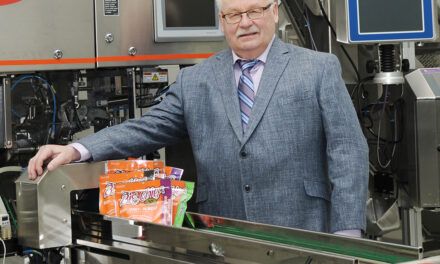
Vaping Products in Canada

Vaping Products in Canada
By Luc Martial
There has been so much negative press on vaping products in recent months. The storm, however, will eventually subside. The dust will settle and life will go on for this category.
Some quick history
2007
- Electronic cigarettes (e-cigarettes) come to the Canadian marketplace. These products look like cigarettes and cigars. Thus the name.
- E-cigarettes dispense low levels of (free-base) nicotine and are sold outside the mass distribution channel.
- Nicotine in Canada is regulated as a “drug” under the Food and Drugs Act (FDA). An amendment to the FDA, years earlier, was introduced to allow products dispensing lower levels of nicotine to be sold over-the-counter / without prescription (e.g. 2-4 mg nicotine gums). If those products wanted to continue making health claims however (e.g. helps to quit smoking), then they needed to subsequently secure market authorization from Health Canada under the Natural Health Products Regulations (NHPR).
- Because e-cigarettes dispensed low levels of nicotine – they were exempted from being regulated as a “drug” under Canada’s FDA. Because e-cigarette manufacturers never made any health claims whatsoever about their products – they did not need market authorization from the government under the NHPR.
2009-2012
- The market grows exponentially, as the C&G channel focuses on disposable e-cigarettes. Specialty vape shops emerge across Canada focussing on a wider assortment of innovative vaping devices (e.g. vape tanks, accessories and e-liquids).
- Health Canada issues a public advisory in 2009, stating that electronic cigarette products may pose a health risk to consumers; that these products are regulated under the Food and Drugs Act (requiring market authorization before being sold); that Health Canada has not yet authorized any such products; and that those importing, advertising and/or and selling these products have to stop immediately.
- Health Canada issues several cease and desist letters to retailers across Canada. Manufacturers and retailers, convinced of their legal standing, ignore or counter-argue the government.
- Health Canada never enforces its interpretation of the law, choosing instead to obstruct the marketplace by refusing entry at customs of e-cigarettes and/or vaping products (e-liquids) containing nicotine. Manufacturers respond by producing nicotine dispensing e-cigarettes and e-liquids domestically – and the market continues and flourishes.
- E-cigarettes and e-liquids selling in Canada contain between 0 per cent – 2.6 per cent (or 26 mg/mL) nicotine. The most popular skus are in the 0.6 per cent and 1.8 per cent range. A great variety of flavours are offered to consumers.
- Public testimonials from smokers across Canada tell a promising story – they say that these products have helped them to finally quit smoking.
2013
- The federal government estimates that 2.5 million Canadians have tried e-cigarettes. The vast majority of consumers are tobacco smokers and only 25 per cent of those surveyed reported that the last e-cigarette they used contained/dispensed nicotine. The survey confirms that these consumers are turning to e-cigarettes as a way to never start smoking, reduce their tobacco consumption or quit altogether. (2013 Canadian Tobacco, Alcohol and Drugs Survey (CTADS).
2015 – 2016
- Health Canada begins public policy consultations on electronic cigarettes / vaping products. Industry stakeholders are invited to participate.
- Provincial governments take more immediate action and introduce new laws or amend their existing tobacco laws to now regulate electronic cigarette and/or vaping products (like tobacco).
- In the U.S. a new type of mass-market vaping device emerges. The device uses “pods” which dispense much higher levels of nicotine (upwards of 5 per cent or 59 mg/mL) and in a new form: nicotine salts.
2017
- 4.6 million Canadians (15+) have tried an electronic cigarette.
- 863,000 Canadians are recent consumers (last 30 days use). 65 per cent of them are current smokers, 64 per cent use e-cigarettes that contain nicotine – and their flavour of choice is: fruit (43 per cent,) tobacco (22 per cent) and candy/dessert (14 per cent).
2018
- Health Canada amends the Tobacco Act to now include general vaping products (Tobacco and Vaping Products Act). General vaping products are now regulated to include: a ban on various ingredients and flavour themes, a ban on testimonials, a ban on sales (or furnishing) to minors, a ban on lifestyle advertising, a ban on free samples, etc. More regulations are to come.
- Although vaping products in Canada never contained much more than 2.6 per cent (or 26 mg/mL) of nicotine, Health Canada oddly enough publicly states that it will now allow the import and domestic sale of e-products (i.e. devices and liquids) containing up to 6.5 per cent (or 65 mg/mL) of nicotine.
- Numerous pod-based mass-market vaping devices start appearing in the C&G channel (e.g. JUUL, Vype, Logic, Mylé, SLTH, etc.) – all dispensing “nicotine salts” and most with more than twice the levels of nicotine ever before seen or consumed in Canada (i.e. 5 per cent or 59 mg/mL).
- Researcher and health authorities sound the alarm on a worrisome spike in the number of high school kids who are suddenly “vaping.” They point their finger at the new mass-market vaping devices recently introduced in Canada. Focussed on product design rather than product access as the cause, they fuel a regulatory call for over-regulations on packaging, labelling, advertising and sales.
2019
- Health Canada initiates public consultations on additional regulations (i.e. design, labelling, content, advertising, promotion, sales) – this time, intentionally excluding industry stakeholders from policy discussion.
- A growing number of vaping-related illnesses and subsequent deaths in the U.S. suddenly emerge and are greatly reported in the media. U.S. Health authorities provide little information as to the likely cause(s) – although it is eventually reported that one likely culprit is the vaping of THC oil and the use of vitamin E acetate. A few vaping-related incidents are reported in Canada (Ontario, BC and Québec) – and here as well, the authorities do not disclose to the public what vaping products or ingredients are at issue.
- Health groups, anti-tobacco/vaping advocates, industry associations (both traditional and mass-market) and independent companies are at odds on the issues and the solutions. Everyone one has an opinion, everyone has an agenda.
- Some Canadian governments rush to further regulate. In late October, the Government of Alberta announced pending legislation to include a specific tax on vaping products scheduled for their next fiscal year (2020). This would make Alberta the first Canadian province to introduce such a tax (and on the basis of protecting youth from vaping). The Government of Saskatchewan (October 23rd Throne Speech) also committed to introducing vaping legislation in the coming months. The government of Ontario for its part announced that it would be reversing its 2018 decision to allow the promotion of vaping products in convenience stores and gas stations (effective January 1, 2020). Only specialty stores and cannabis stores in Ontario will be allowed to promote vaping products. All of this…on the premise that it will protect youth (and adults) from vaping.
- Further government regulations are coming, as always.
If you have any questions regarding vaping or tobacco laws in Canada, please do not hesitate in contacting me at: lmartial@tlb.sympatico.ca. It would be my pleasure to assist you in understanding the laws which impact the products you sell and possibly address any issues raised by government inspectors (e.g. verbal or written warnings, etc.).
Luc Martial is a 28-year veteran of the tobacco file in Canada, having held key postings in the tobacco control and national health communities, the federal government (Health Canada) and the industry. His professional involvement in the vaping category began in 2007 and by 2012 he was managing government relations on the then number one selling e-cigarette brand in the C&G channel.


































